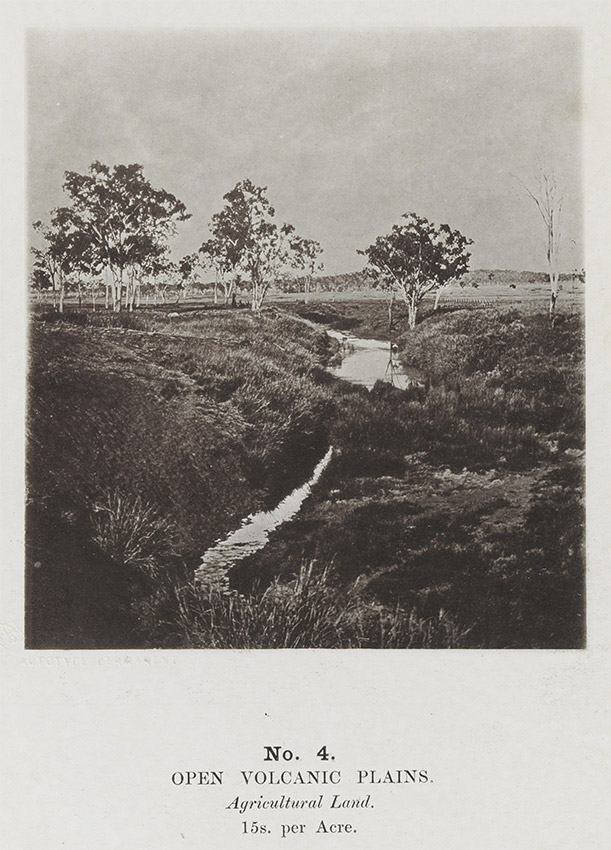We acknowledge the Traditional Owners of the land on which the Queensland Art Gallery | Gallery of Modern Art stands and recognise the creative contribution First Australians make to the art and culture of this country.

Richard Daintree / England/Australia 1832–1878 / (Open volcanic plains) (no. 4 from ‘Images of Queensland’ series) c.1870 / Autotype on paper / 21 x 13cm / Purchased 2009 with funds raised through the Queensland Art Gallery Foundation 30th Anniversary Appeal / Collection: Queensland Art Gallery | Gallery of Modern Art
Richard Daintree(Open volcanic plains) (no. 4 from ‘images of Queensland series) c.1870
Not Currently on Display
This photograph is one of a group of 20 Queensland images from the period around 1870. In 1871 Queensland was invited to participate in the London International Exhibition. The purpose of these exhibitions for colonies like Queensland was to attract immigrants and investment, and Richard Daintree proposed an exhibit that combined geological specimens with his photographs, thus providing the young colony with a unique perspective to present itself.
Daintree was appointed to personally supervise its setup. Surviving the ordeal of a shipwreck on the voyage (in which he lost all but his photographic negatives) he mounted an exhibit that was a great success and resulted in his appointment as Agent-General for Queensland in London.
The text below this photograph reads: ‘Open Volcanic Plains. Agricultural Land. 15s. per Acre.’ The image was produced in sensitised pigmented gelatin by exposure to light under a negative, producing a picture in ink from the gelatin plate.
Richard Daintree was born in Huntingdonshire, England, the son of a farmer. He enrolled at Christ’s College, Cambridge in 1851, but due to ill health left England in 1852 to join the gold rush in Victoria. An unsuccessful prospector, he joined the Victorian Geological Survey in 1854.
In 1856 he returned to England to study geological assaying and during this time became interested in photography. On his return to Australia with his new wife, Daintree worked with another important early photographer, Antoine Fauchery, to develop a volume of photographic studies entitled ‘Australia’. This book proved popular and contained significant early images, particularly of Victoria.
In 1864 Daintree become a resident partner with William Hann in pastoral properties in the new Burdekin country of North Queensland. He spent some years running the properties and indulging his interest in photography, but also persisted in his exploration of Queensland from a geological point of view, with the purpose of opening up the goldfields in northern Queensland.
Discussion Questions
1. Daintree used photography to create an interest in Queensland as a place to live and work. Does this photograph make you want to visit or live in this location? Discuss your reasons.
2. Daintree’s photographs provide an insight into the colonial view of land as a commodity. How does Daintree’s view differ to the way Indigenous people view the land?
Classroom Activities
1. Produce a package of written and visual descriptions to entice students to enrol at your school. This could contain photographs, drawings, paintings and video footage. For example, ‘A Day in the Life of 6A’ could be created.
2. The text in this image is vital in communicating the artist’s intended meaning. If you remove the text it becomes a striking landscape, dominated by the symmetrical balance of the trees in the foreground. Examine how the text provides the context through which the images and objects are viewed. Using a post-colonial frame of reference, add alternative text to the photograph to satirise the Australian colonists’ points of view.